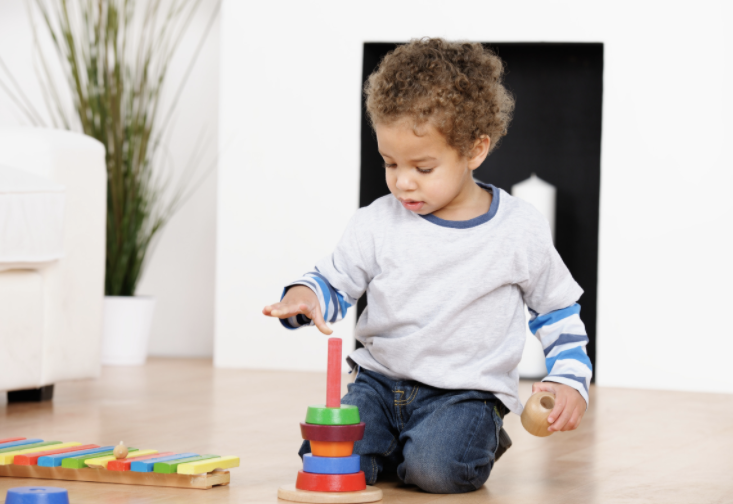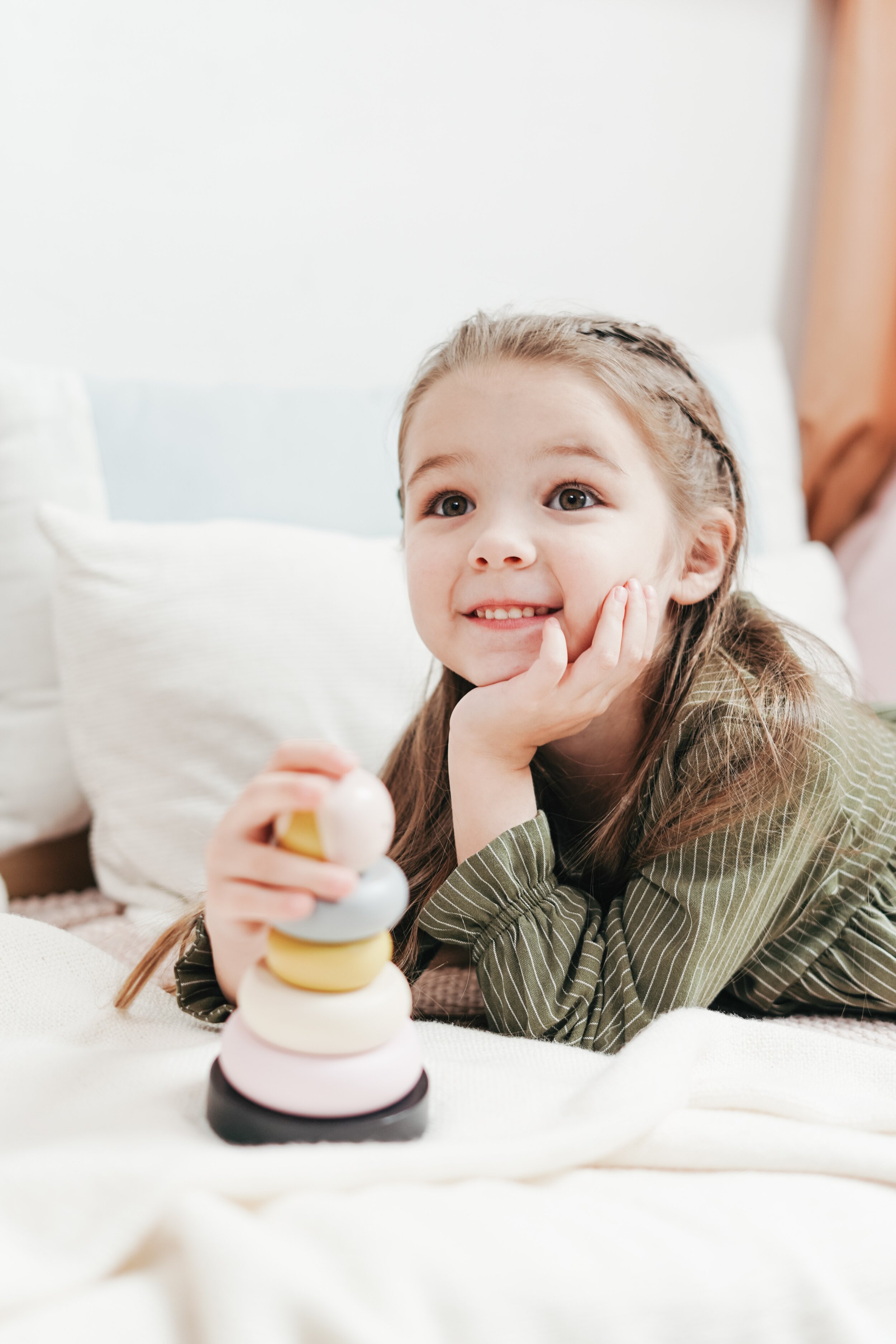One of the quintessential toys from early childhood - the ring stacker - is one of my favorites to use in therapy sessions with young babies with hearing loss. Sure, you can use it how it’s meant to be used, but I like to play with toys in silly or unconventional ways. If you’d like some ideas about new ways you can use the ring stacker to build learning and language skills, then read on! And if you have a child with hearing loss, then you don’t want to miss #5!
Photo credit: Canva.com
1. Hide and Seek: You can hide the rings around the room and have your little one find them. Is your little one not yet mobile? Then simply hide the ring under a blanket and play peek-a-boo! If your toddler can crawl or walk, hide the rings in different places and have your child go find them. A few ways to scale this up or down: keep them in plain sight for younger babies; for older children, tell them where the rings are to work on following directions/understanding for location words (prepositions) – e.g. “The blue ring is under the couch.”
2. Make the rings into a “hat” – this is something all my kids loved as babies. We took turns putting a ring on our heads and calling it a hat, then aaaachooo! The ring falls down. Super simple, but very effective. Here are some vocabulary words you can target with this: up, down, fall, hat, head, more, uh-oh. Here are some concepts you can work on with this: understanding for possessives (“Mommy’s head” vs “Baby’s head”), understanding for pronouns (“my” and “your”), listening for two key words in a phrase (i.e. your child listens for “Mommy’s head” vs “Baby’s head” in order to know where to put the ring), etc.
3. Use the rings as a “microphone.” Place the ring directly in front of your mouth and make silly sounds. By placing the ring near your mouth, your child’s attention is drawn to the shape of your mouth to see how you are making sounds. This is also a great way to encourage your child to vocalize. First model this activity, then place the ring in front of your child’s mouth and give him or her an expectant look to indicate it’s his or her turn to make a sound. For children who are just starting to learn how to use their voice, any sound is a cause for celebration. For children who are a little more advanced, you can try and have them copy the sound you make. Can they match the exact sound? Can they match the pattern of your voice (e.g. if you say “bah-bah-bah” do they imitate three syllables back)? Can they match the pitch of your voice? Can they match the duration of your voice (e.g. if you make a long sound like “ahhhhhhhhh”, can they make a long sound back)? These are all skills that are important for children with hearing loss who are using spoken language.
4. Roll the rings back and forth to one another. Picture the rings like hula hoops that you can roll across the floor. They don’t always roll easily, but that just makes for more to talk about! Depending on your child’s age, you can highlight the following words and concepts with this activity: stop, go, my turn, your turn, roll, uh-oh, fall down. For older children, you can make this into an activity where they listen for key words in a sentence (e.g. “Roll the biggest ring,” “Roll the red ring,” etc) or where they use sentences involving descriptive words (e.g. they tell you, “I’m rolling the biggest ring,” “I’m rolling the red ring,” etc).
5. Speaking of listening, you can use these rings for a simple “listen and drop” activity. Have your child hold a ring up to his ear and wait to hear a sound before placing it on the stacker. This is an example of what we call Conditioned Play Audiometry, where children perform a task each time they hear a sound. This is great practice for those audiology appointments!
Image by Vural Yavas from Pixabay



